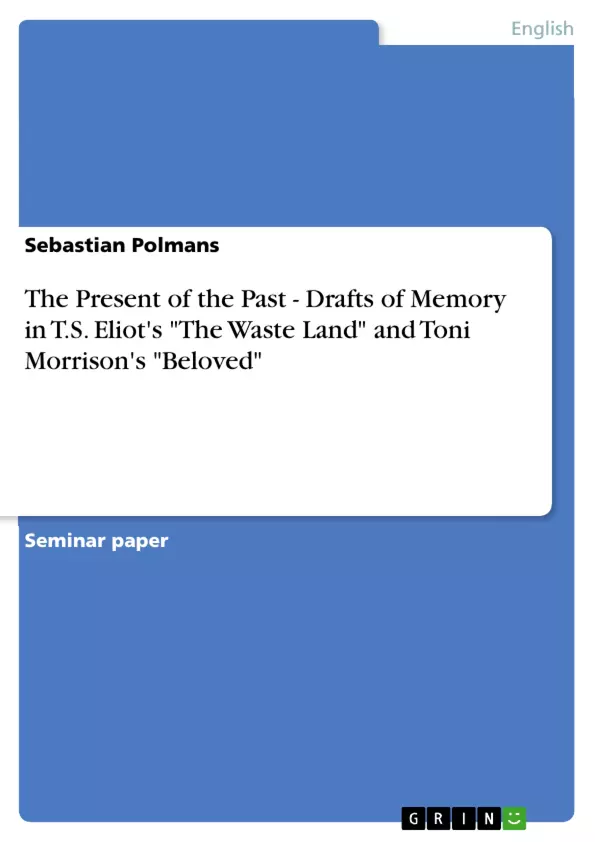In his book about “Tradition” Edward Shils claims, “there are two pasts.” One is the phenomenal past; the past of realism, the past of occurred incidents which builds a sequence of human action until the present is reached.
The other past is the perceived past. As “a much more plastic thing” this form of past is recorded in myths, memory and in literature, which are built up on the encounters and experiences with the occurred incidents.
Sethe, the fictional figure and protagonist in Toni Morrison’s “Beloved”, offers a view towards the timelessness and power of memory: “If a house burns down, it’s gone, but the place – the picture of it – stays, and not just in my rememory, but out there, in the world.” Does that mean that memories live amongst us? Of course many things we remember today have been there long before our generation was born – for example experiences of our ancestors during World War II, or even myth, traditional orals. Nevertheless, its appearances before do change in the mind of the living generation which is referring to it.
Concerning a pedagogical purpose, in his book, Shils claims for a need of tradition as T.S Eliot does in his essay “Tradition and the Individual Talent”. With a sensitive regard to the past as function and feeder for a modern artist, it becomes obvious that even novelty presupposes what T.S. Eliot calls “historical sense”. In his essay from 1919 Eliot debates about the problem of time and its relation towards the past. In Eliot’s understanding
“[…] the historical sense involves a perception, not only of the pastness of the past, but of its presence; […] This historical sense, which is a sense of the timeless as well as of the temporal and of the timeless and the temporal together, is what makes a writer traditional.”
Inhaltsverzeichnis (Table of Contents)
- Introduction
- T.S. Eliot, "The Waste Land" and the past
- T.S. Eliot towards the aesthetics of memory
- Rhetoric of memory in "The Waste Land"
- Does "The Waste Land" correspond with Eliot's view towards memory?
- Toni Morrison, "Beloved" and the past
- Toni Morrison towards the aesthetics of memory
- Rhetoric of memory in "Beloved"
- Does "Beloved" correlate with Morrison's view towards memory?
- Conclusion
Zielsetzung und Themenschwerpunkte (Objectives and Key Themes)
This term paper aims to explore two different drafts of perceived memory in English literature: T.S. Eliot's "The Waste Land" and Toni Morrison's novel "Beloved". The paper seeks to demonstrate a potential reciprocity between past art and literature in Eliot's poem, and to offer a recital of Toni Morrison's novel as a meditation on memory based on "hard facts" and the body of slavery.
- The role of memory in shaping identity and understanding the past
- The relationship between personal memory and cultural memory
- The use of literary techniques to represent and explore memory
- The influence of historical events on individual and cultural memory
- The interplay of myth, tradition, and the past in literary works
Zusammenfassung der Kapitel (Chapter Summaries)
The introduction establishes the concept of "perceived past" as distinct from the "phenomenal past" and introduces the central theme of memory as a powerful force shaping identity and understanding. The paper then explores the relationship between memory and art in the work of T.S. Eliot, examining the influence of classical themes and the concept of tradition on "The Waste Land." This chapter analyzes the poem's use of archaic motifs and its portrayal of a modern world marked by the decay of cultural memory.
The following section examines the relationship between memory and history in Toni Morrison's "Beloved." The chapter explores the novel's focus on the body of slavery and the impact of traumatic events on the characters' memories and identities. The chapter also analyzes the use of literary techniques such as flashback and narrative voice to convey the lasting impact of the past on the present.
Schlüsselwörter (Keywords)
The central keywords and focus topics of the text include memory, tradition, cultural memory, historical sense, "The Waste Land," "Beloved," T.S. Eliot, Toni Morrison, myth, archaic motifs, slavery, trauma, identity, and the past. The work explores the interplay of these concepts in shaping individual and cultural understanding.
- Quote paper
- Sebastian Polmans (Author), 2007, The Present of the Past - Drafts of Memory in T.S. Eliot's "The Waste Land" and Toni Morrison's "Beloved", Munich, GRIN Verlag, https://www.grin.com/document/84375



